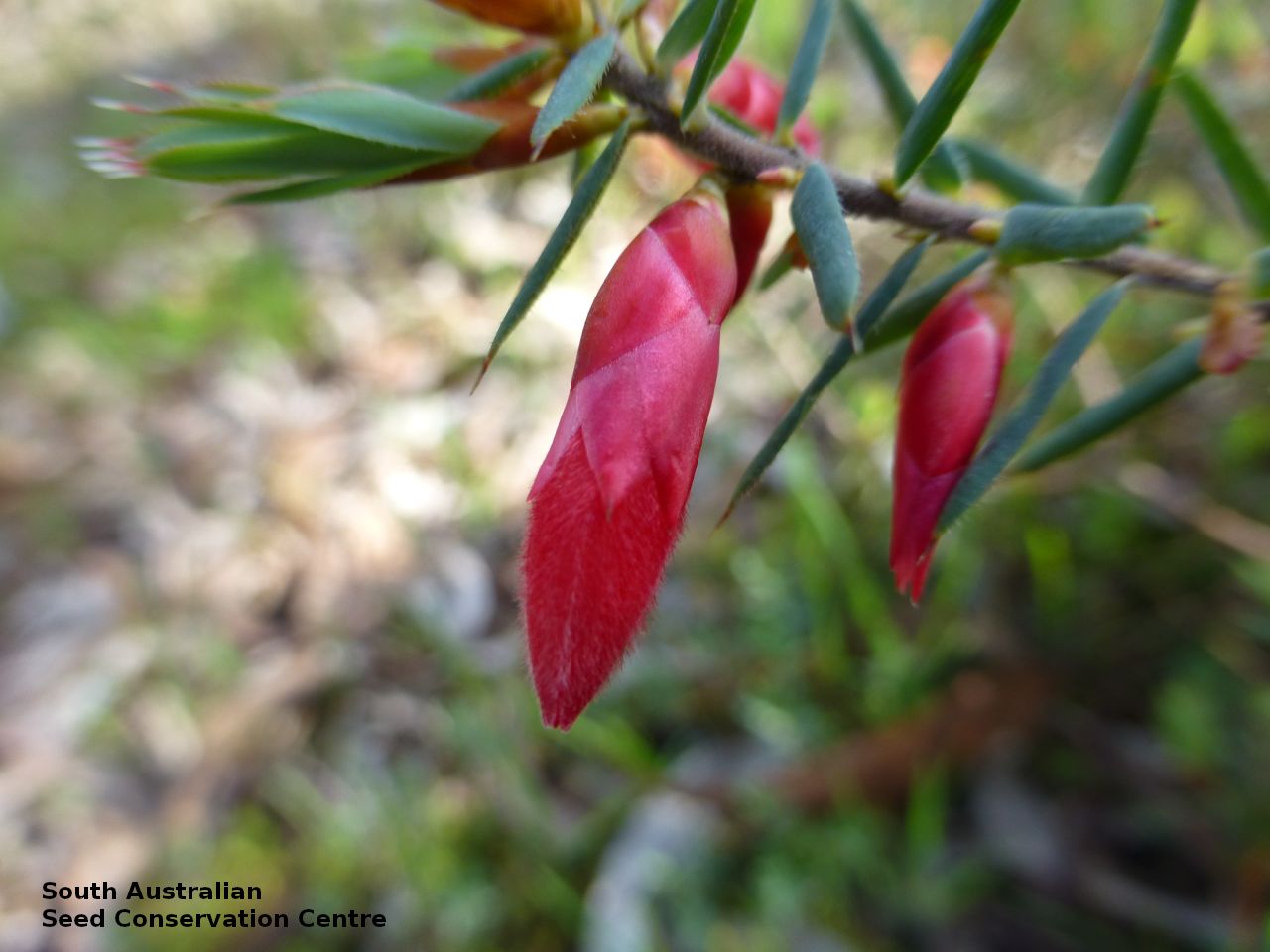
















Botanical art
Prior names
Astroloma conostephioides
Pentataphrus behrii
Styphelia sonderi, nom.illeg.
Styphelia behrii
Etymology
Stenanthera from the Greek 'stenos' meaning narrow and 'anthos' meaning flower, anthers (formerly Astroloma from the Greek 'astron' meaning star and 'loma' meaning fringe, alluding to the tufts of hair inside the corolla tube). Conostephioides means similar to Conostephium, (a genus of flowering plants in the heath or heather family Ericaceae) and coming from the Greek 'conos' meaning cone and 'stephanos' meaning something that encircles; a crown or wreath.
Distribution and status
Found on Eyre peninsula, Mount Lofty Ranges, Murray and the South-East in South Australia growing in mallee scrub and in dry open forest on sandy loam or quartzite sand. Also found in Victoria. Native. Common in South Australia. Common in Victoria.
Herbarium regions: Eyre Peninsula, Northern Lofty, Murray, Yorke Peninsula, Southern Lofty, Kangaroo Island, South Eastern, Green Adelaide
NRM regions: Adelaide and Mount Lofty Ranges, Eyre Peninsula, Kangaroo Island, Northern and Yorke, South Australian Arid Lands, South Australian Murray-Darling Basin, South East
AVH map: SA distribution map (external link)
Plant description
Erect or spreading shrub to 100 cm high. Leaves linear to oblong-ovate, to 21 mm long and 2 mm wide, often crowded towards apices; margins recurved to revolute. Single flowers with corolla tube bright-red to 14 mm long, campanulate to conical. Flowering between April and November. Fruits are dark- red fleshy elongated drupe. Seeds are woody, brown ovoid seed to 8 mm long and 4 mm wide. Seed embryo type is linear, underdeveloped.
Seed collection and propagation
Collect seeds between November and March. Collect mature fruits when the bracts are dark-red and dry. Place fruits in a bucket of water and leave to soak overnight. Then rub the fruit to remove the flesh. Rub and change the water a few times until all the fresh are removed. Leave the cleaned seed to dry and then store with a desiccant such as dried silica beads or dry rice, in an air tight container in a cool and dry place. From one collection, the seed viability was high, at 95%. This species has morpho-physiological dormancy and can be difficult to germinate. However, high levels of germination were obtained when seeds were carefully excised from the woody drupes and treated with gibberellic acid.
| Location | No. of seeds (weight grams) | Number of plants | Date collected | Collection number Collection location | Date stored | % Viability | Storage temperature |
|---|---|---|---|---|---|---|---|
| MSB | 1,200 (107.88 g) | 29-Oct-2005 | DJD158 Murray |
Number of plants: This is the number of plants from which the seeds were collected.
Collection location: The Herbarium of South Australia's region name.
% Viability: Percentage of filled healthy seeds determined by a cut test or x-ray.